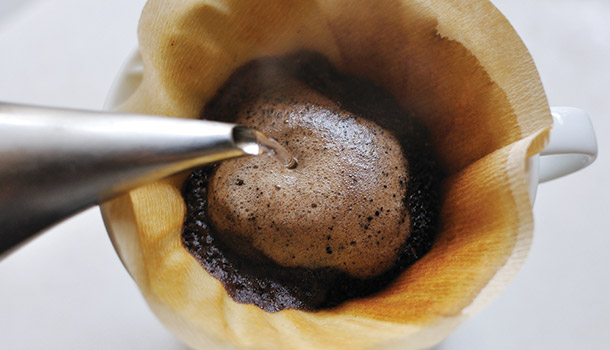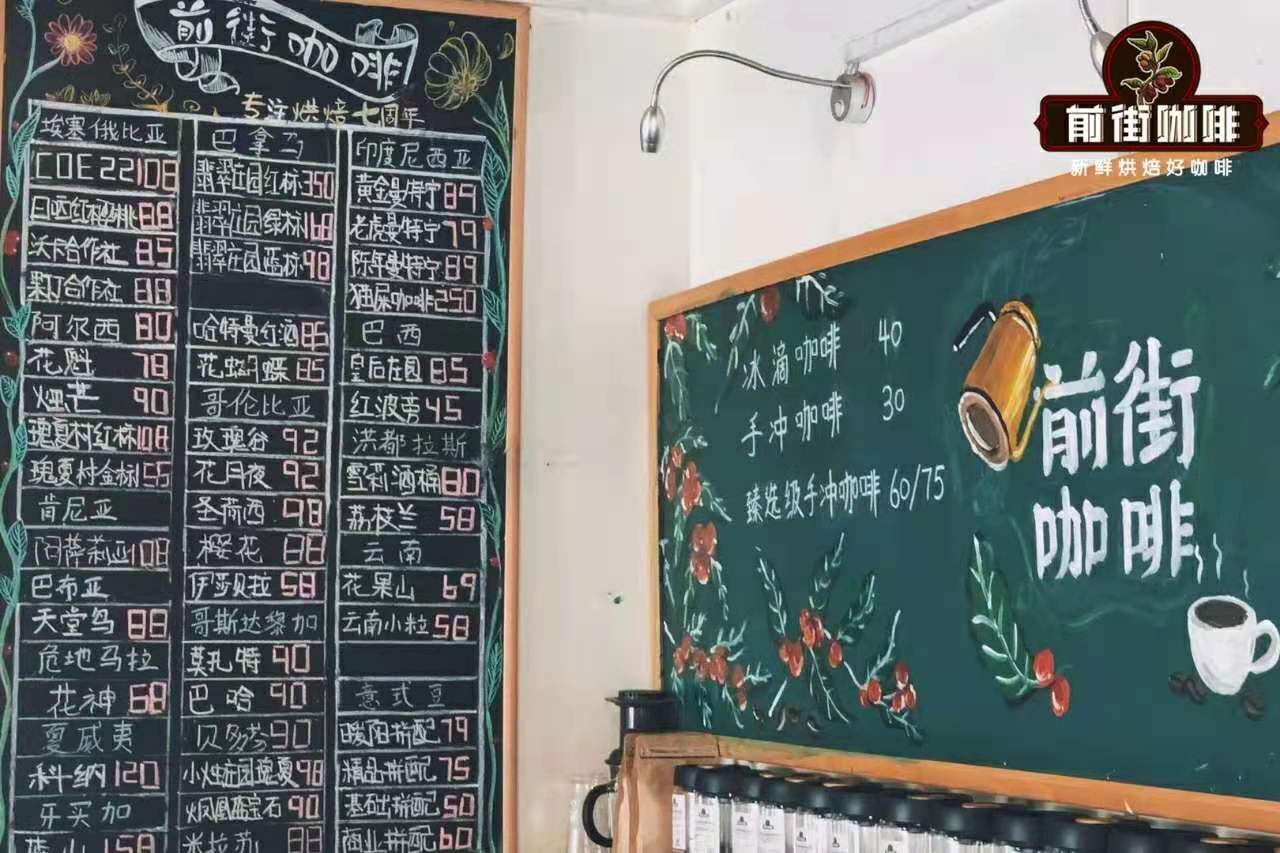How to choose freshly roasted coffee beans? How to judge the freshness of coffee?

For professional baristas, please follow the coffee workshop (Wechat official account cafe_style)
Fresh, is the king of delicious coffee.
More and more people are getting used to buying freshly roasted coffee beans directly from bakeries, so there are a lot of tips to teach you about the freshness of coffee beans, the most common of which is:
Whether there are enough bubbles when brewing.
Freshly roasted coffee beans, because the beans contain a lot of gas, strong respiration, in the extraction, the beans released gas, we see is a wonderful plump bubbles, there is a very vivid adjective, "blooming". Yes, when fresh coffee beans are extracted, clumps of rich bubbles bloom like flowers of this season.
It is accompanied by the rich aroma of fresh coffee beans.
An in-depth study of whether bubbles are abundant or not
During extraction, the richness of bubbles is positively related to freshness. The fresher the bubbles are, the more bubbles are. However, there is a premise for the same coffee bean. To be exact, it is the same raw beans, the same baking, the same operation.
The fullness of bubbles will be different between different coffee beans, or between different roasting degrees of the same coffee bean, or between different operating coefficients of the same coffee bean.
To sum up: the fresher the same coffee bean, the richer the bubbles; for the same coffee bean, deep roasting is more abundant than shallow roasting bubbles.
And between different coffee beans, apart from the differences in baking degree and other factors, only from their own structure, will also reflect the difference in hydrophilicity, the most intuitive reflected in the speed of water absorption and the degree of blistering.
Suggestions for adjusting extraction
For the same coffee bean, if the existing operation mode of extraction is not ideal, you can consider: increasing the number of coffee powder, increasing the thickness of the powder layer, increasing the combination time of coffee powder and water; increasing the extraction water temperature, further stimulating the activity of coffee beans; reducing the degree of grinding, grinding a little finer, and increasing the contact area between coffee powder and water molecules.
Of course, the above advice is for fresh coffee beans.
The regulation of each extraction factor will have a certain impact on the final taste of coffee. For the taste of the last cup, we still need to rely on the maker's grasp.
After a short baking period, the flavor of coffee beans reached its peak. Under the premise of proper preservation, the coffee beans in the first two weeks are considered to be in the most fresh period (especially the extraction of Ereo needs fresh), and the coffee beans in the first six weeks are relatively fresh. Once ground into coffee powder, more than 50% of the active flavor will escape within 5 minutes, so freshly ground coffee powder has only a short "fresh period" of 5 minutes. Need to be on-demand, quantitative, real-time grinding before extraction-to make a cup is to grind a cup of powder, do not be lazy, and any direct purchase of coffee powder is unprofessional.
Important Notice :
前街咖啡 FrontStreet Coffee has moved to new addredd:
FrontStreet Coffee Address: 315,Donghua East Road,GuangZhou
Tel:020 38364473
- Prev

How is the charm of freshly roasted coffee? is freshly roasted coffee beans fresh?
Professional barista communication please pay attention to the coffee workshop (Wechat official account cafe_style) although the baking technology is simple, which is based on certain equipment, many large coffee shops are imported coffee beans from abroad, which can not guarantee the flavor of coffee beans, sweet and warm my heart custom roasting equipment, coffee bean roasting technology operation is very simple, but it will certainly affect the world, so that coffee
- Next

When choosing coffee beans, do not choose the obvious and rich aroma, because …...
Professional baristas Please follow the coffee workshop (official Wechat account cafe_style) when you smell coffee powder, it shows that it is deteriorating and the essence of coffee is diminishing. If the diameter of the coffee powder is doubled, the volume of a single particle is reduced by 1 beat 8, and the corresponding surface area of the total coffee powder is increased once. After the coffee bean is ground into coffee powder, its surface area increases exponentially, compared with that of coffee powder.
Related
- Guji coffee producing area of Guji, Ethiopia: Humbela, Shakiso, Wulaga
- What is the most expensive variety of Qiloso in BOP multi-variety group?
- How to store the coffee beans bought home?
- Why are Yemeni coffee beans so rare now?
- Ethiopian Sidamo all Red Fruit Sun Sun Santa Vini Coffee beans
- SOE is mostly sour? What does it mean? Is it a single bean? what's the difference between it and Italian blending?
- Is Italian coffee beans suitable for making hand-brewed coffee?
- How to choose coffee beans when making cold coffee? What kind of coffee beans are suitable for making cold coffee?
- Just entered the pit to make coffee, what kind of coffee beans should be chosen?
- Can only Japan buy real Blue Mountain Coffee? What are authentic Jamaican Blue Mountain coffee beans?

